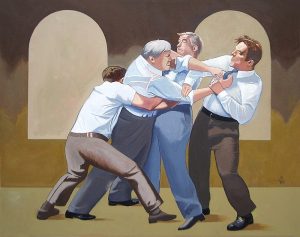Did Justice Ginsburg Stay Too Long?
 Ruth Bader Ginsburg is a liberal stalwart. An icon of a generation. She has fought for everything in her life, and, in recent times, she has been fighting for her life. RBG has had an incredible career and has often been a voice for people who didn’t have one. Her liberal ideology has been a light shining through times of darkness. Through all of her incredible work, I believe that two questions still need to be asked. Was RBG selfish by not resigning toward the beginning of President Obama’s second term in office? Would that have been the right decision to allow President Obama to appoint someone who may last longer on the court? It may not be worth arguing over since it is long in the past, but there is a discussion to be had, nonetheless.
Ruth Bader Ginsburg is a liberal stalwart. An icon of a generation. She has fought for everything in her life, and, in recent times, she has been fighting for her life. RBG has had an incredible career and has often been a voice for people who didn’t have one. Her liberal ideology has been a light shining through times of darkness. Through all of her incredible work, I believe that two questions still need to be asked. Was RBG selfish by not resigning toward the beginning of President Obama’s second term in office? Would that have been the right decision to allow President Obama to appoint someone who may last longer on the court? It may not be worth arguing over since it is long in the past, but there is a discussion to be had, nonetheless.
It is always tough to foresee when someone’s health will falter. With RBG, that sadly seems to be the norm rather than the exception at this point. Half of the country is left hanging every time her name comes up on a major news network or trends on Twitter. Thankfully, she has come out on top of everything she has battled thus far, but it is not outlandish to say that one of these times the country may not be so lucky.


